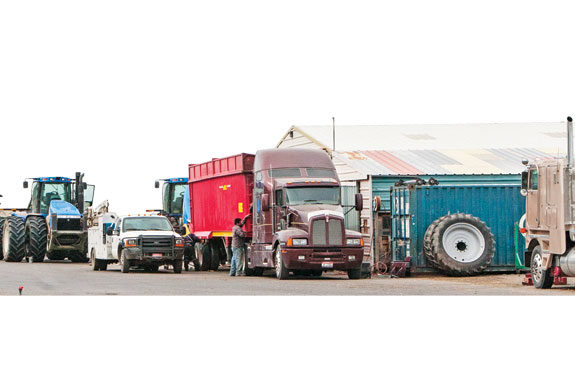Somebody somewhere along the line once told me, “You’re either going to make monthly payments on a new machine, or you’re going to pay for parts and repair if you choose to depend on previously used equipment.”
Spanning my 40-some years experience of buying, selling and remanufacturing, I have found this to be a consistently true scenario.
Whether delivering dairy products, working on a ranch, farm or feedlot, or working on hydroelectric plants, the truism remains constant.
I learned early in my career that a consistent and thorough maintenance plan was essential regardless of whether the machinery was new or used.
By checking oil, fuel, coolant and air supply, greasing drivelines and wheel bearings, and maintaining bolt and nut integrity and support, a buyer could be reasonably certain of completing the required tasks on time with a minimum of downtime for repair.
Buying a piece of used equipment can present a challenge. It’s a bit of a gamble, depending on how the deal is approached. The challenge is to unlock the hidden secrets of repair that may be needed on any piece of machinery that has been previously used.
The gamble is how good your interpretation is of those unlocked secrets of normal wear and tear, and how it has affected the overall condition and usefulness of the machine.
The key lies in a very detailed inspection of the machine by a knowledgeable mechanic who can interpret the telltale signs and patterns of maintenance, repair and also any neglect of these elements.
A cracked engine block, bad transmission or broken final drive, any one of which can cost more than a machine is worth, can render an otherwise “good looking” machine to the scrap-metal heap.
Even with a knowledgeable mechanic’s advice, buying used equipment is still a gamble, but at least it’s an educated one.
Pre-purchase research has always played a key role in making a good buying decision. By researching others’ experiences of the service life and usefulness of a machine, it can many times lead to the biggest cost savings overall.
Reviewing classified ad or want-ad prices, auction prices and kicking a few tires before you actually buy has always been a good plan.
Know what you are about to buy from research before laying down the hard-earned cash and ending up with a boat anchor. These days the Internet offers an additional resource for research.
When selling a used piece of equipment, it’s best to just be as honest as possible with a trading partner. If the reliability of the machine is in question, it’s best to state the obvious – this is broken, and that needs repair to work right.
One of the best bartering or haggling comebacks I ever heard was one time when I went to buy a used crawler cat. I had mentally made a list of the problems I was going to use to chisel away at the asking price.
After I stated my concerns, my sales opponent calmly paused for a brief moment, then turned to me and stated in a very direct manner, “No, it’s not a new machine. If it was new, I’d be asking new price.”
Till next time. PD
Wilkinson is an independent maintenance consultant in Thompson Falls, Montana.
Photo by Mike Dixon.






